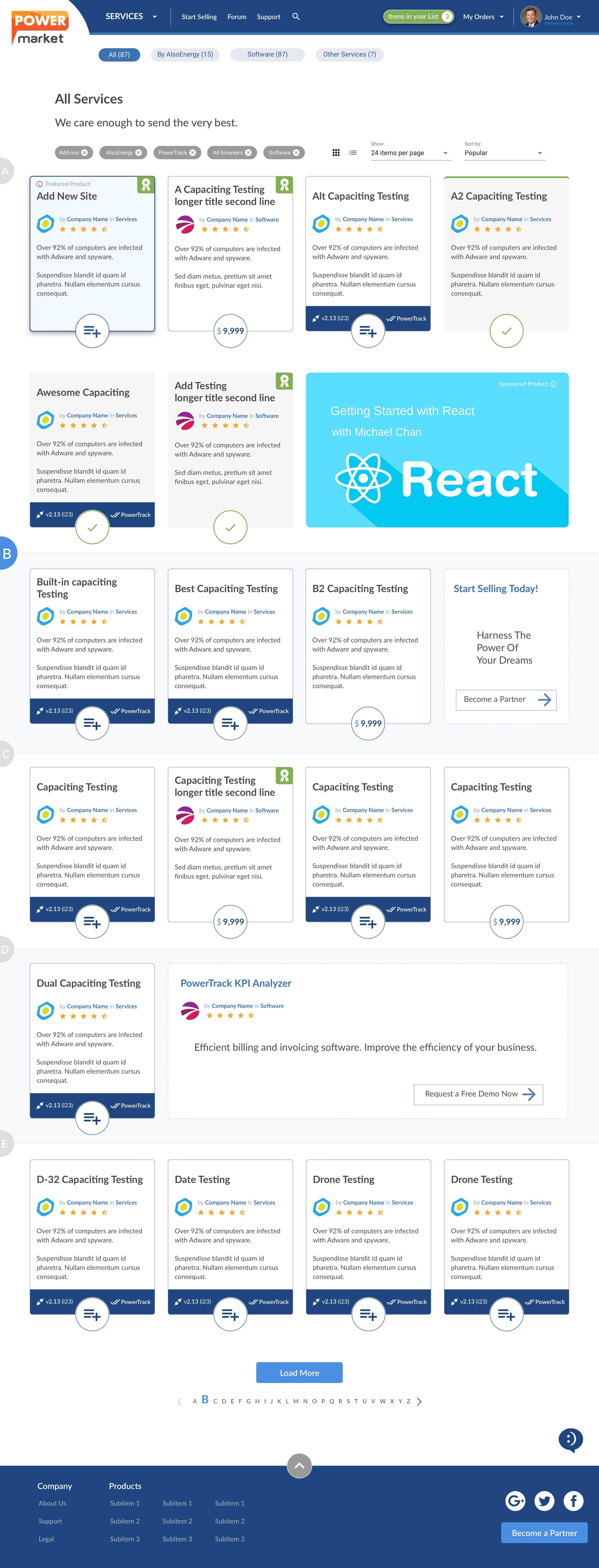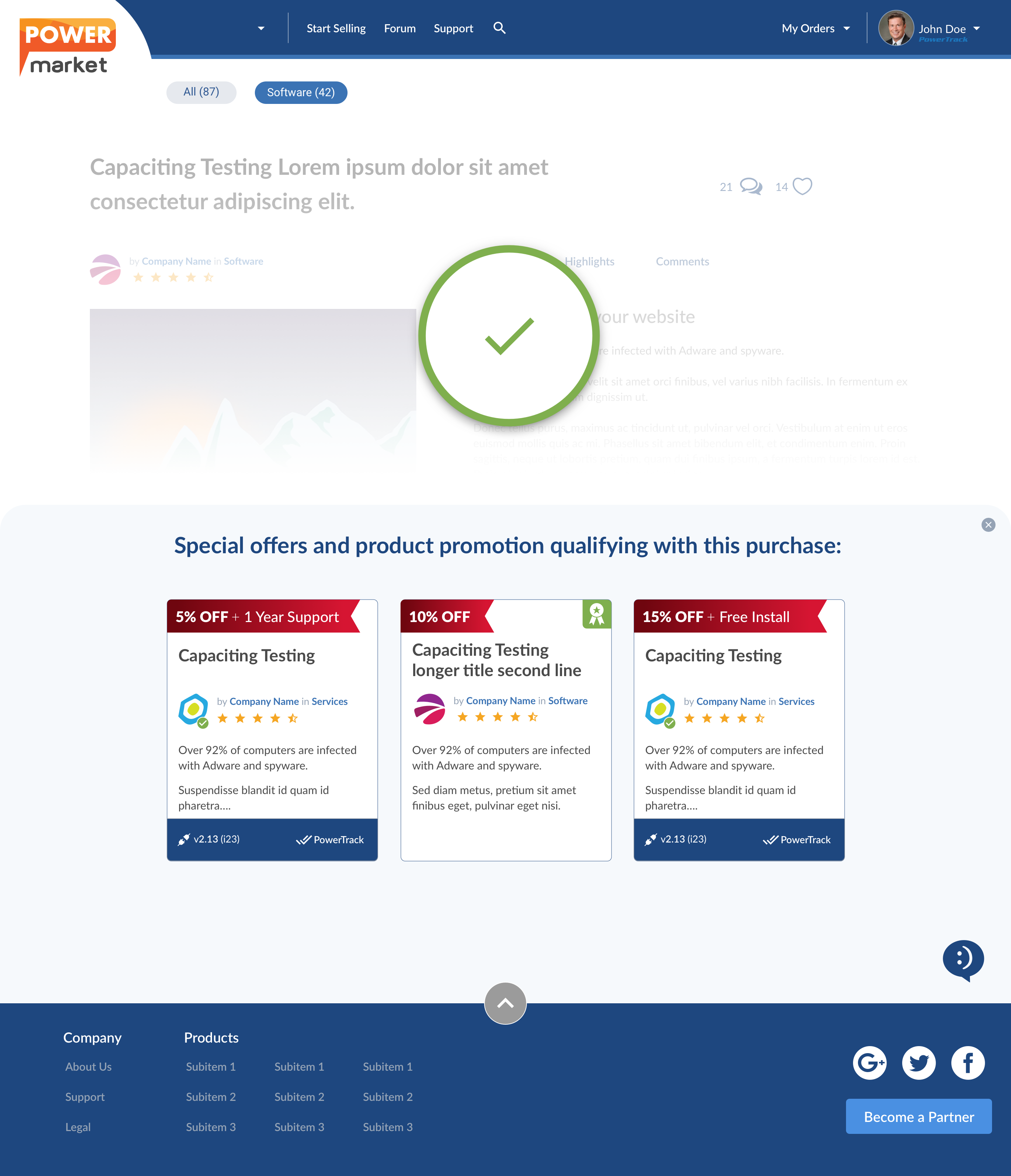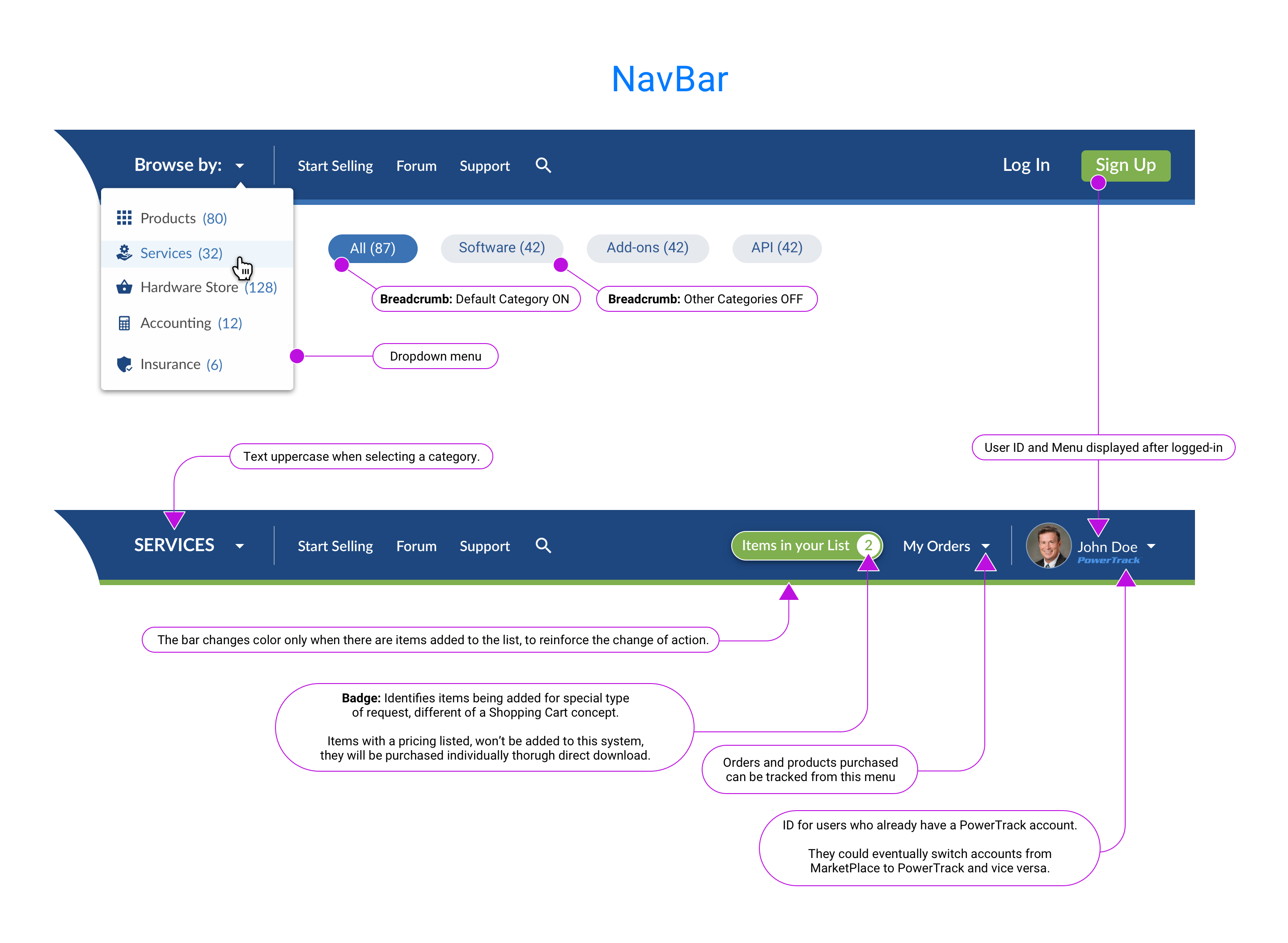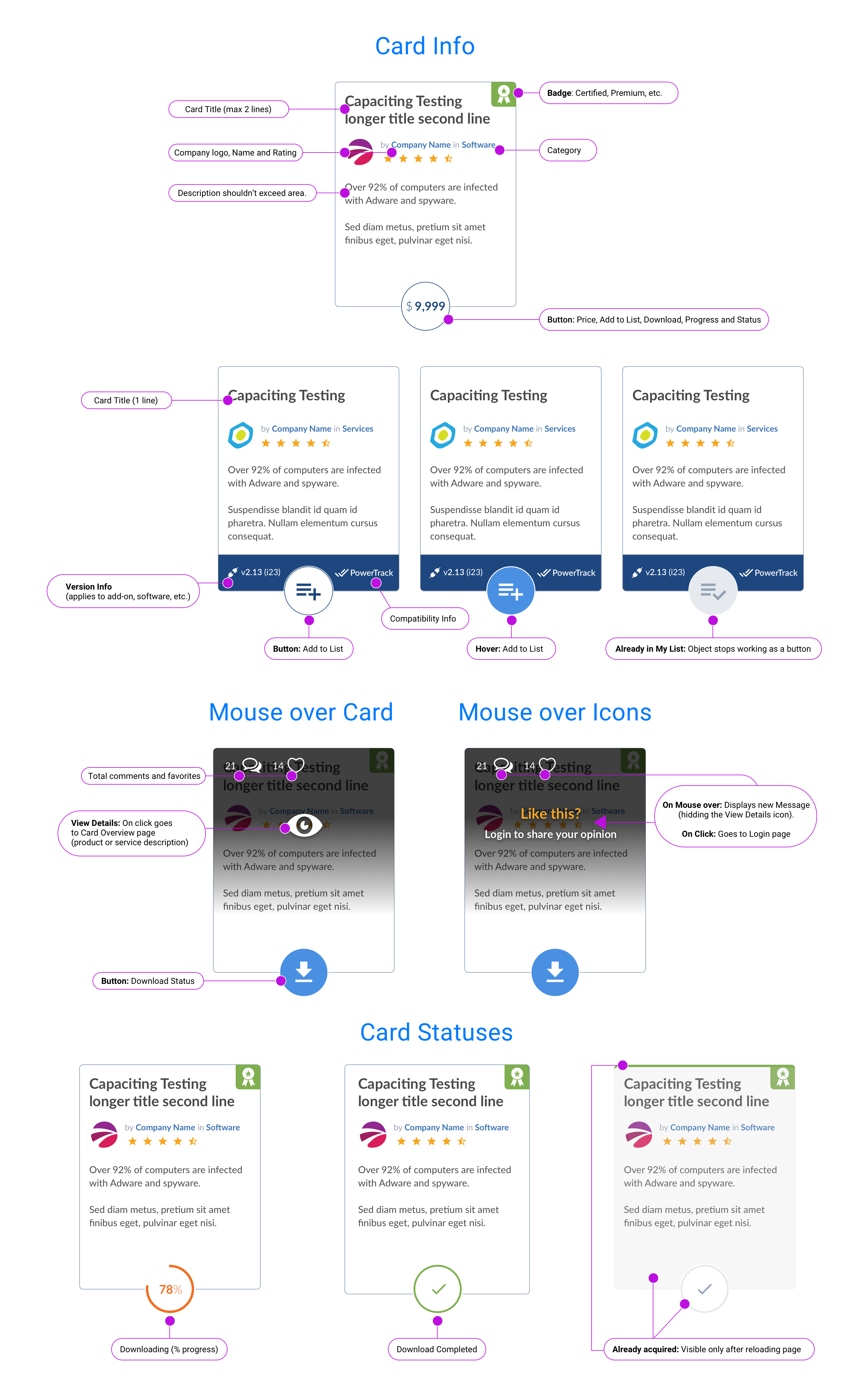AlsoEnergy — Energy Marketplace Platform — UX Architecture & Prototype Exploration
Framework for an Energy App Marketplace
Interface & Experience Preview
A focused look at the core flows, layouts, and interaction concepts explored during the Marketplace prototype.
Project Overview
MarketPlace was conceived as a new extensible commerce platform for the PowerTrack product ecosystem—designed to allow third-party developers and technology partners to publish, promote, and sell add-on applications, services, and integrations.
I led the product conception, UX research, structural design, and prototype development, defining how an energy-sector marketplace could work inside a highly regulated, data-dense environment. The initiative advanced through early discovery, IA, component architecture, card taxonomy, and user flows, ultimately producing a functional prototype used for internal evaluation.
Public release and further development were paused; current status is unknown.
Project Summary
Timeline & Team
TBD
Product Lead & UX Strategist, Internal Product Team, Engineering Stakeholders, Business Stakeholders
Tools & Methodology
Figma, Sketch, Balsamiq Mockups
Competitive benchmarking, stakeholder interviews, developer workflow analysis, IA and structural modeling, wireframing, interaction design, visual direction prototyping
Key Deliverables
- • Competitive analysis report
- • Marketplace architecture (categories, taxonomies, metadata, tags)
- • Card layouts and product state models
- • Wireframes for navigation, browsing, and submission flows
- • Interactive prototype (home, services view, product listings, sponsored placements)
- • Full annotation package with behavior rules and component logic
Performance Metrics
Because the initiative remained in early conceptual and structural design phases, no quantitative KPIs were gathered. Formal usability and workflow efficiency testing were scheduled for later development cycles.
Problem Statement
PowerTrack lacked a unified, scalable platform to distribute add-ons or third-party tools. External developers had no formal method to showcase or monetize integrations, and internal teams had no structured framework for evaluating, listing, or supporting partner products.
Challenge
Designing a marketplace inside an enterprise energy platform required solving several issues:
- No existing catalog, commerce model, or UX patterns for modular add-ons.
- Large variations in product types (software, monitoring tools, analytics, services).
- Highly technical users with strict performance and reliability expectations.
- Need for scalable categorization, metadata, and cross-product compatibility tags.
- Requirement for a consistent visual language to support hundreds of future listings.
- Requirement for a developer-friendly submission and review workflow.
The goal was not only to design product listings, but to define how a marketplace would operate technically, visually, and behaviorally within the PowerTrack ecosystem.
Approach
My contribution covered the full conceptual and UX strategy phase:
- Discovery & Research: Competitive benchmarking (AWS Marketplace, Azure Marketplace, Atlassian Marketplace). Interviews with internal product, engineering, and business stakeholders. Analysis of developer workflows and integration points within PowerTrack.
- IA & Structural Modeling: Defined marketplace architecture: categories, taxonomies, metadata, tags, compatibility groups. Established card layouts, ranking models, and product states (downloaded, in-progress, premium, sponsored, versioning).
- Wireframes & Interaction Design: Designed multi-level navigation for browsing, sorting, filtering, and comparing products. Created card-based grid behavior: hover states, badges, usage indicators, CTA hierarchy. Designed submission flows for external developers.
- Visual Direction Prototype: Produced interactive prototypes showcasing home experience, all services view, product listing variations, sponsored placements, and developer-submitted content templates. Provided a full annotation package describing behavior, rules, and component logic.
This stage delivered a complete conceptual framework + prototype, sufficient for engineering scoping and business evaluation.
Solution
The prototype showcased how a scalable energy marketplace could operate:
- Modular card system: Supporting diverse product types and metadata.
- Clear visual hierarchy: For evaluations, ratings, compatibility, and pricing.
- Flexible filtering and sorting: System for large catalogs.
- Sponsor and premium placement model: For revenue generation.
- Developer-ready submission flow: Defining required assets, descriptions, tags, and versioning.
- Unified UI library: To guide future design and development decisions.
While the project did not proceed to full build, the conceptual system established the foundation for future marketplace work.
Results
Because the project remained in the conceptual + prototype stage, no production metrics exist. However, internal evaluation confirmed:
- 100% completion of planned conceptual scope (research, IA, design architecture, and prototype).
- High clarity—positive internal feedback on taxonomy, card behaviors, and scalable structure (via stakeholder review workshops).
- Reusable assets adopted—components and patterns from this prototype were later referenced by internal teams for unrelated PowerTrack UX initiatives (documented through internal design audits).
Key Takeaway
Even without full development, MarketPlace demonstrated how a complex energy-sector ecosystem could evolve into an extensible, partner-driven platform. The work provided a product foundation, visual system, and structural blueprint for a marketplace strategy that could still be activated and expanded in the future.



